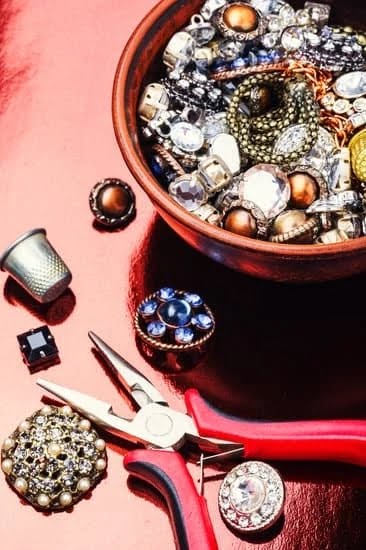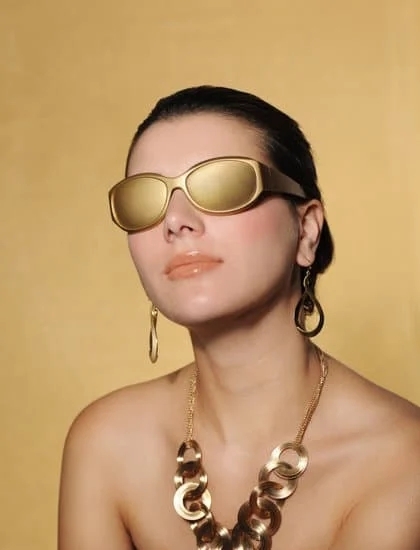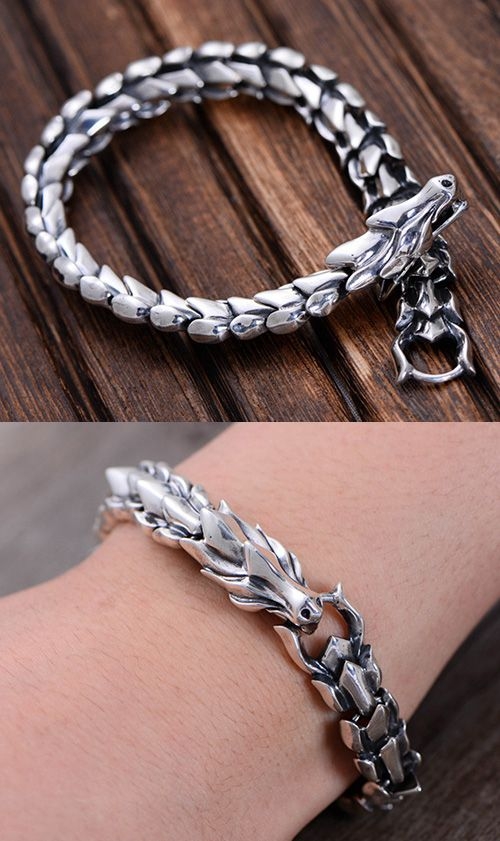Introduction
Victorian mourning jewelry has a long and fascinating history that dates back to the Victorian era in Europe. It is an iconic form of jewelry with its roots in mourning practices of this period. It was designed to be worn as a memorial for someone who had passed away, typically as part of the grieving process. In particular, it was most popular among upper-class British households.
The designs of Victorian mourning jewelry often featured imagery that was very symbolic of death and grief, such as black enamel, jet stones, skulls and skeleton figures, cross shapes, inverted symbols (upside down hearts or anchors), and references to mortality such as broken clocks or hourglasses. As a result, some pieces can now be quite valuable if they feature rare combinations of motifs like these. The material used also came to play an important role in the history of these pieces over time; gold and silver were primarily used due to their strength but also because they could easily be engraved with words or images that signified remembrance.
Apart from the materials used and its distinct design elements, Victorian Mourning Jewelry also carried religious significance at times because some pieces depicted angels or saints which many Victorians believed gave them protection against evil spirits during times of sorrow. Furthermore, there were superstitions about this type of jewelry that evolved over time; for instance one belief held that wearing your loved one’s initials close to you kept them close by in spirit even after passing on!
Overall, whether from its symbolism or material, design element or superstition beliefs; Victorian Mourning Jewelry is an important part of European mourning practices during the 19th century and remains an integral part of cultural memory today. Both collectors and historical associations highly value these treasured objects that stand as a testament to solemn times gone by – reminding us all how far we have come since then.
General Overview
Victorian mourning jewelry was popular during the Victorian era (1837-1901). Mourning jewelry was traditionally worn by someone mourning the death of a loved one, as a sign of respect and remembrance. As such, it is often characterized by somber designs, symbols and inscriptions.
Types – Typically made out of black materials like jet, black enamel, ebony wood or vulcanite, Victorian mourning jewelry was meant to represent grief and mourning. Popular types included lockets and brooches. In some cases, funeral garments were also trimmed with this jewelry.
Styles -Gothic Revival style accessories were popular within the genre’s designs which usually featured elements like crosses, skulls, coffins and thistles. There was even a trend for wearing smaller pieces inside lockets which contained hair from the deceased individual.
Common motifs – Common motifs associated with these pieces included willows (as an acknowledgement of sorrow), doves (representing peace) and irises (which could be interpreted as meaning faithfulness in the afterlife). Additionally, many mourning jewelry items included inscriptions about those who had died or had initials engraved upon them to reflect their memory.
Popularity
Victorian mourning jewelry is a type of jewelry from 19th century Europe that was used to commemorate the death of a loved one. It became extremely popular during the reign of Queen Victoria, who famously wore mourning jewelry after the death of her beloved husband, Prince Albert. Common materials used for Victorian mourning jewelry included jet, blackened gold, and dark colored gemstones such as onyx or coral. Symbolism was important in such pieces—symbols like broken columns and hearts being especially popular devices to show grief. Often these symbols were accompanied by inscriptions such as ‘In Memory Of’ or ‘Eternal Life’.
Famous examples of Victorian mourning jewelry include Queen Victoria’s personal collection which features many pieces designed with Prince Albert’s initials, along with elegantly delicate designs featuring crucifixes and Greek keys. The large popularity of this era’s memorial jewellery saw it become incorporated into other forms, like lockets and brooches featuring portraits or locks of hair to remind people of their departed relatives. The legacy associated with Victorian mourning has seen the aesthetic style transplanted into fashion today—from small charms to rings alluding to loss—and soon spread out from royalty throughout aristocratic families all over Europe. Today there are still collectors seeking out pieces reflective of this era in order to commemorate lost loved ones and remember them in eternity, often combining modern aesthetics to create timeless heirlooms they can pass down through generations.
Celebrations and Rituals
Victorian mourning jewelry was used in Victorian Britain to commemorate and honor deceased loved ones. Such jewelry was often made from black glass, jet, or other materials seen as symbols of mourning. Common pieces were lockets with pictures of the deceased inside, and brooches inscribed with names or dates of a person’s birth and death. The wearing and exchanging of such mourning jewelry during funerals, memorials and other rituals played an important role in the culture of bereavement at the time. The jewelry was regarded as being filled with deep personal significance for those who sported it and helped to keep the spirits of lost loved ones close. It also provided a tangible way to connect people who were grieving while allowing them to take moments away from their sadness in order to share stories about the dearly departed instead.
Memory Preservation
Victorian mourning jewelry was a popular way for individuals to express their grief, through the wearing of jewelry dedicated to those they had lost. This type of jewelry developed during a period of elaborate and dramatic acts of mourning for the deceased, particularly among members of the Victorian aristocracy. It quickly spread throughout Europe and America. Popular items included memorial rings, lockets, brooches, pins and necklaces with memento mori designs. These pieces often combined precious metals such as gold and silver with either enamel or jet (a type of coal), and featured cameos formed from hair taken from the deceased as well as portraits painted on ivory or glass; they could be further personalized to include gemstones or engraved inscriptions.
Victorian mourning jewelry served both an aesthetic purpose in expressing personal grief in a symbolic manner, as well as a practical purpose in preserving memories of loved ones who had passed. Its designs allowed wearers to keep their departed close at heart –literally– by wearing them within a locket or ring that held family photos and/or mementos such as locks of hair or fabric ribbons. The incorporation of symbols like broken columns representing death’s power over life was another reminder that life is short and fragile, while other symbols such as moths signified rebirth after death. Further personalization could be achieved through engraving these symbols along with names, dates and comforting maxims onto metal surfaces.
Modern Uses
Victorian mourning jewelry is a unique genre of art and culture that emerged during the Victorian Era in the 19th century. It was used to commemorate the loss of a loved one, allowing people to carry a special memento of them. Victorian mourning jewelry usually features artistic elements such as intricate etching or lacework, which were often inspired by nature and were meant to be timeless. Popular materials included jet (a variety of coal), glass, silver and gold.
Victorian mourning jewelry finds its way into cultural symbolism and aesthetics even today, with many modern wearers seeing it as an elegant and meaningful reminder of their lost loved ones. Social media and retail stores offer pieces that have been given new life, updated with symbols relevant to today’s audiences. Examples include matching necklaces that contain birthstones, lockets with engravings on them symbolic to an individual’s memory, or rings inscribed with meaningful wordings such as “forever love” or a sunset/sunrise motif symbolizing life’s journey. Likewise for those who appreciate vintage-style jewelry there are original antique pieces which are highly sought after for their unique beauty.
Conclusion
Victorian mourning jewelry is a type of jewelry which commemorates the death of a loved one. Made popular in the Victorian era, it can be found in many styles and materials, from rings to brooches to lockets. Its materials may include black onyx, jet, hair jewelry and enameling. Symbols such as weeping willows, cherubs and skulls are often incorporated into designs as an expression of grief. Not only did Victorians wear mourning jewelry to honor those who passed away, but also keep tangible reminders of them close at hand.
This meaningful form of adornment is still sparking emotion today thanks to its timeless appeal. As we seek fresh ways to commemorate loss and celebrate those who have gone before us, Victorian mourning jewelry remains a special way to portray enduring devotion with its thought-provoking symbolism and quality craftsmanship. Used both for reflection and admiration, it’s no wonder why individuals throughout history have been turning towards this unique art-form for solace during sad times – making it a powerful symbol for honoring those we love for generations to come.

Welcome to my jewelry blog! My name is Sarah and I am the owner of this blog.
I love making jewelry and sharing my creations with others.
So whether you’re someone who loves wearing jewelry yourself or simply enjoys learning about it, be sure to check out my blog for insightful posts on everything related to this exciting topic!





